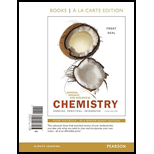
Concept explainers
a.
To match:
The metabolic
Introduction:
Nucleotides are the building blocks of the
b.
To match:
The metabolic nucleotide that matches with the description “exchanges energy when
Introduction:
Nucleotides are the building blocks of the nucleic acids such as deoxyribo nucleic acid (DNA), and ribonucleic acid (RNA). These nucleotides have significant metabolic functions in cells, therefore, called as “metabolic nucleotides”. They act as energy exchanger and can also be coenzymes. Metabolic nucleotides have two forms: a high energy form and a low energy form.
c.
To match:
The metabolic nucleotide that matches with the description “the oxidized form of Flavin adenine dinucleotide”
Introduction:
Nucleotides are the building blocks of the nucleic acids such as deoxyribo nucleic acid (DNA), and ribonucleic acid (RNA). These nucleotides have significant metabolic functions in cells, therefore, called as “metabolic nucleotides”. They act as energy exchanger and can also be coenzymes. Metabolic nucleotides have two forms: a high energy form and a low energy form.
Want to see the full answer?
Check out a sample textbook solution
Chapter 12 Solutions
General, Organic, and Biological Chemistry, Books a la Carte Edition (3rd Edition)
- Glucose-6-phosphate detours to the hexose monophosphate shunt pathway in erythrocytes because: Question 73 options: A) They lack mitochondria making them incapable of the TCA cycle B) They lack endoplasmic reticulum making them incapable of the TCA cycle C) Erythrocytes have no energy needs D) Erythrocytes utilize glucose directly for energyarrow_forwardHow much energy is released as ATP from the complete oxidation of stearic acid (CH3(CH2)16COOH)?arrow_forwardwhich coenzyme will accept two hydrogen atoms in order to form an alkene? a. FADH2 b. FAD c. ATP d. NADH/H+ e. NAD+arrow_forward
- Trypanosomes living in the bloodstream obtain all their free energy from glycolysis. They take up glucose from the host’s blood and excrete pyruvate as a waste product. In this part of their life cycle, trypanosomes do not carry out any oxidative phosphorylation, but they do use another oxygen-dependent pathway, which is absent in mammals, to oxidize NADH. Would this pathway be necessary if the trypanosome excreted lactate rather than pyruvate? Explain.arrow_forwardGive typed explanation Most of the electrons are collected by NAD+ and FAD+ in the _____________ and brought to the electron transport chain (ETC) in aerobic cellular respiration. glycolysis (Embden-myerhof) photosyntetheic pathways Krebs cycle Calvin cycle intermediate steparrow_forwardWhich nutrient provides energy in its most concentrated form?arrow_forward
 Chemistry for Today: General, Organic, and Bioche...ChemistryISBN:9781305960060Author:Spencer L. Seager, Michael R. Slabaugh, Maren S. HansenPublisher:Cengage Learning
Chemistry for Today: General, Organic, and Bioche...ChemistryISBN:9781305960060Author:Spencer L. Seager, Michael R. Slabaugh, Maren S. HansenPublisher:Cengage Learning Organic And Biological ChemistryChemistryISBN:9781305081079Author:STOKER, H. Stephen (howard Stephen)Publisher:Cengage Learning,
Organic And Biological ChemistryChemistryISBN:9781305081079Author:STOKER, H. Stephen (howard Stephen)Publisher:Cengage Learning, General, Organic, and Biological ChemistryChemistryISBN:9781285853918Author:H. Stephen StokerPublisher:Cengage Learning
General, Organic, and Biological ChemistryChemistryISBN:9781285853918Author:H. Stephen StokerPublisher:Cengage Learning
 Introduction to General, Organic and BiochemistryChemistryISBN:9781285869759Author:Frederick A. Bettelheim, William H. Brown, Mary K. Campbell, Shawn O. Farrell, Omar TorresPublisher:Cengage Learning
Introduction to General, Organic and BiochemistryChemistryISBN:9781285869759Author:Frederick A. Bettelheim, William H. Brown, Mary K. Campbell, Shawn O. Farrell, Omar TorresPublisher:Cengage Learning




